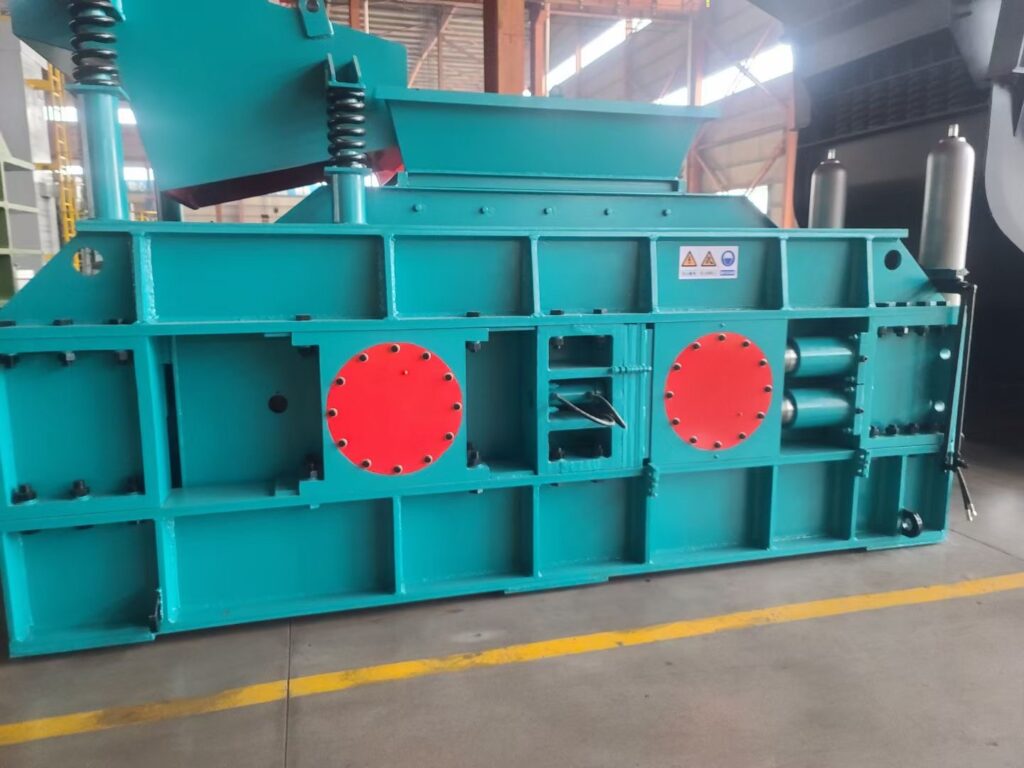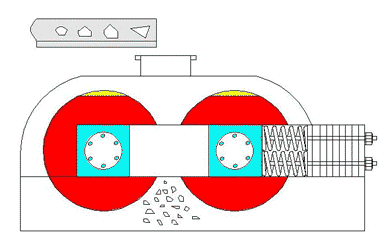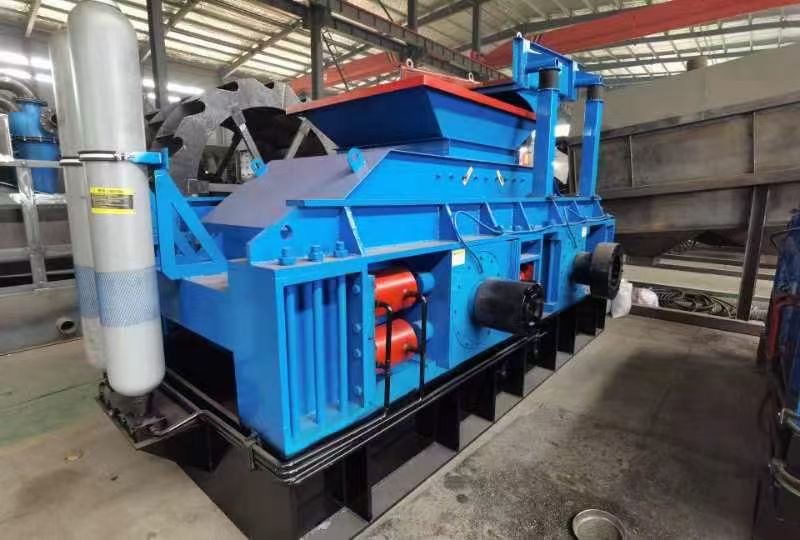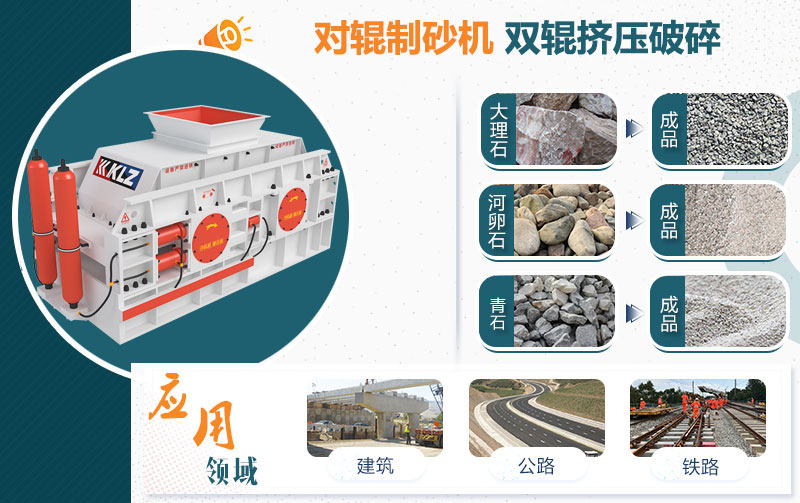Introduction of Double Roller Sand Making Machine
Introduction of Double Roller Sand Making Machine
In modern mining, Konstruktion, and resource recycling industries, the double roller sand making machine (also known as a double roll crusher or twin-roll sand maker) has become an essential industrial equipment. This article provides a comprehensive introduction of double roller sand making machine, covering its working principle, structure, technical advantages, and wide applications to help readers understand this versatile equipment.

Working Principle of Double Roller Sand Making Machine
The core technology of the double roller sand making machine is “double roller extrusion crushing”. Two parallel rollers rotate in opposite directions to crush materials entering the gap. The materials are subjected to continuous compression, shearing, and friction until they reach the desired particle size.
- Particle Size Adjustment: Hydraulic or wedge devices allow precise control of the roller gap, ensuring uniform product size.
- Smart Control: Some models come with intelligent monitoring systems, automatically adjusting parameters to improve operational efficiency.
Image Alt Example: Working principle of double roller sand making machine

Structural Features of the Double Roller Sand Making Machine
- Core Components: Rollers, support bearings, pressure adjustment devices, and transmission system.
- Adjustment System: Wedge or shim devices allow flexible particle size control.
- Safety Protection: Integrated hydraulic spring provides overload protection, preventing equipment damage caused by hard materials.
- Optional Accessories: Iron removal devices, sealing covers, and rubber side plates reduce over-crushing and extend service life.
Image Alt Example: Double Roller Sand Making Machine overview

Technical Advantages
- High Crushing Ratio: Capable of both medium and fine crushing in a single step, reducing energy consumption.
- Adjustable Particle Size: Wide range of particle control to meet various operational requirements.
- Low Maintenance Cost: Modular design simplifies roller replacement and lubrication.
- Environmental Performance: Sealed structure minimizes dust leakage and reduces noise.
Image Alt Example: Double roller sand making machine technical advantages
Applications of Double Roller Sand Making Machine
Thanks to its efficiency, energy savings, and controllable particle size, the double roller sand making machine is widely applied across multiple industries:
- Konstruktion & Building Materials: Meets sand and gravel requirements for housing, road, and bridge projects; provides aggregates for cement and gypsum board production.
- Mining & Mineral Processing: Suitable for secondary crushing of metallic and non-metallic ores, improving resource utilization; used in coal mines for fine crushing of raw coal and gangue.
- Environmental Recycling: Crushes waste concrete, bricks, and slags into reusable aggregates, promoting circular economy.
- Chemical & Metallurgical Industries: Ensures proper particle size of raw materials for smelting and chemical processes.
- Ceramics & Glass Production: Processes quartz sand and ceramic raw materials to ensure product quality.
- Refractories: Crushes medium-hard materials for refractory bricks and aggregates.
- Abrasives & Coal Preparation: Produces standard abrasive grains and supports fine crushing in coal processing.
Image Alt Example: Applications of double roller sand making machine in mining

Conclusion
This comprehensive introduction of double roller sand making machine demonstrates its significance in mining, Konstruktion, chemical, metallurgy, and recycling industries. Its high crushing ratio, controllable particle size, low energy consumption, and easy maintenance make it a core machine for sand and aggregate production.
With continuous technological upgrades, the double roller sand making machine will expand into broader application scenarios, helping industries achieve efficient, green, and sustainable production.

